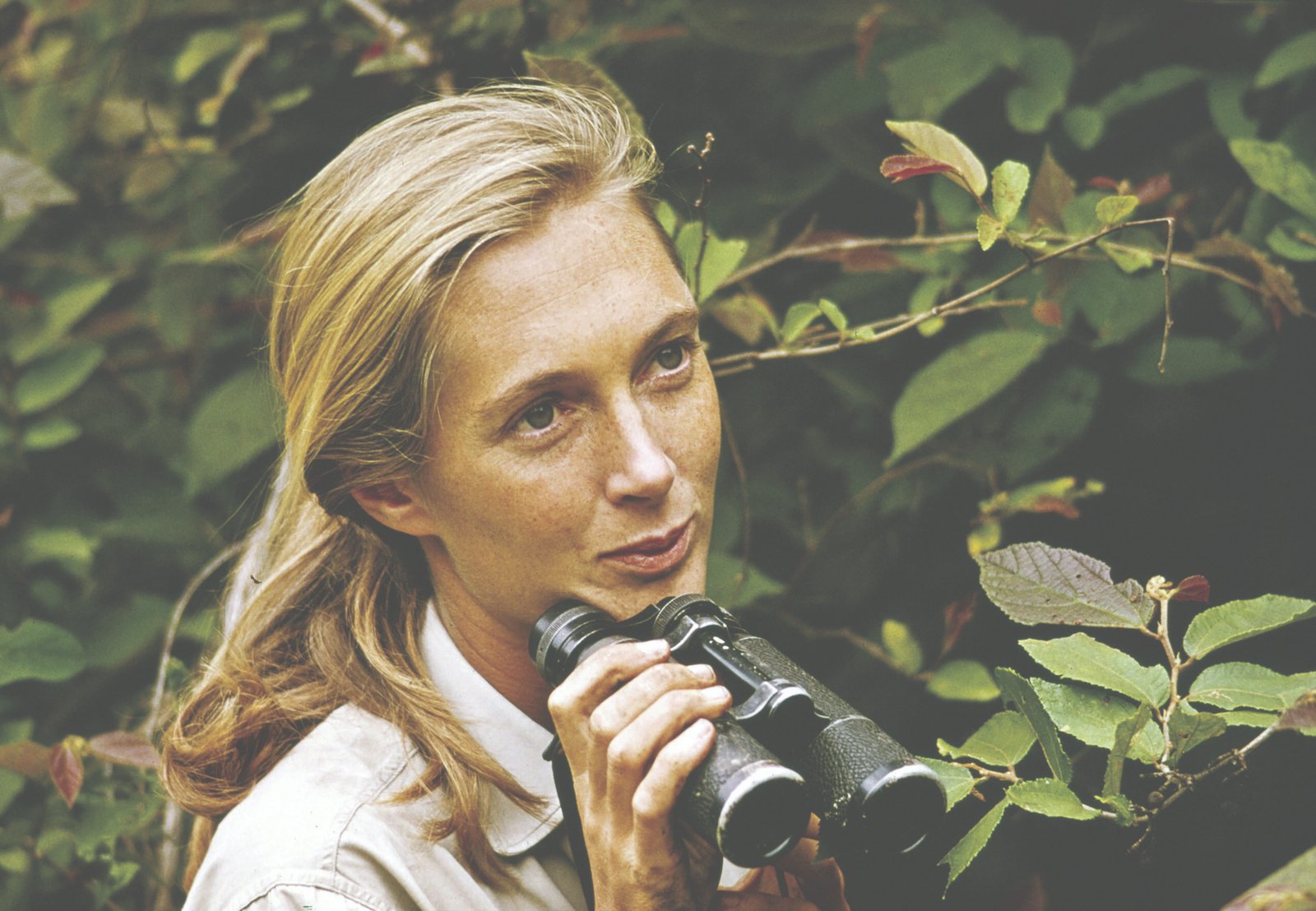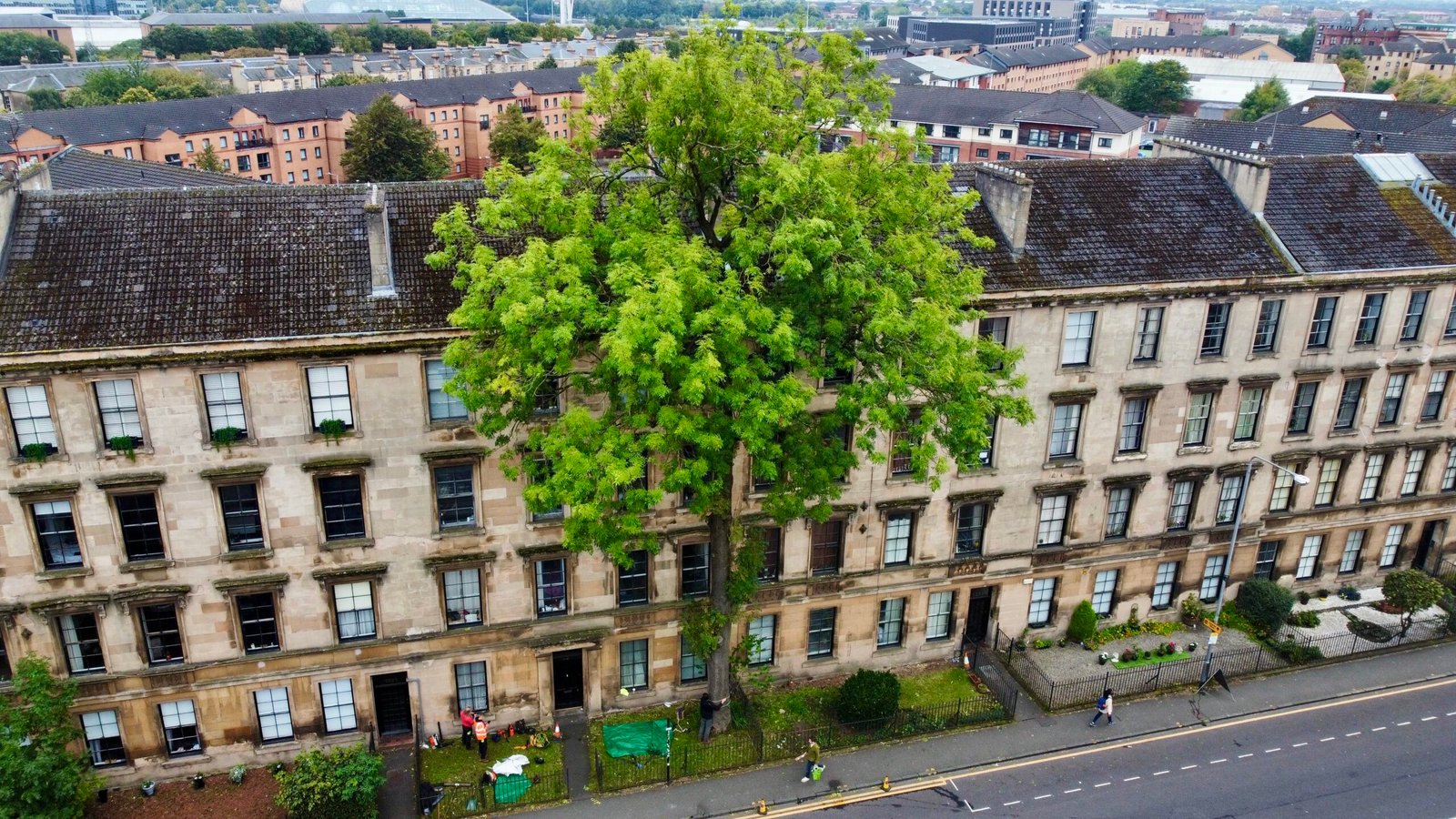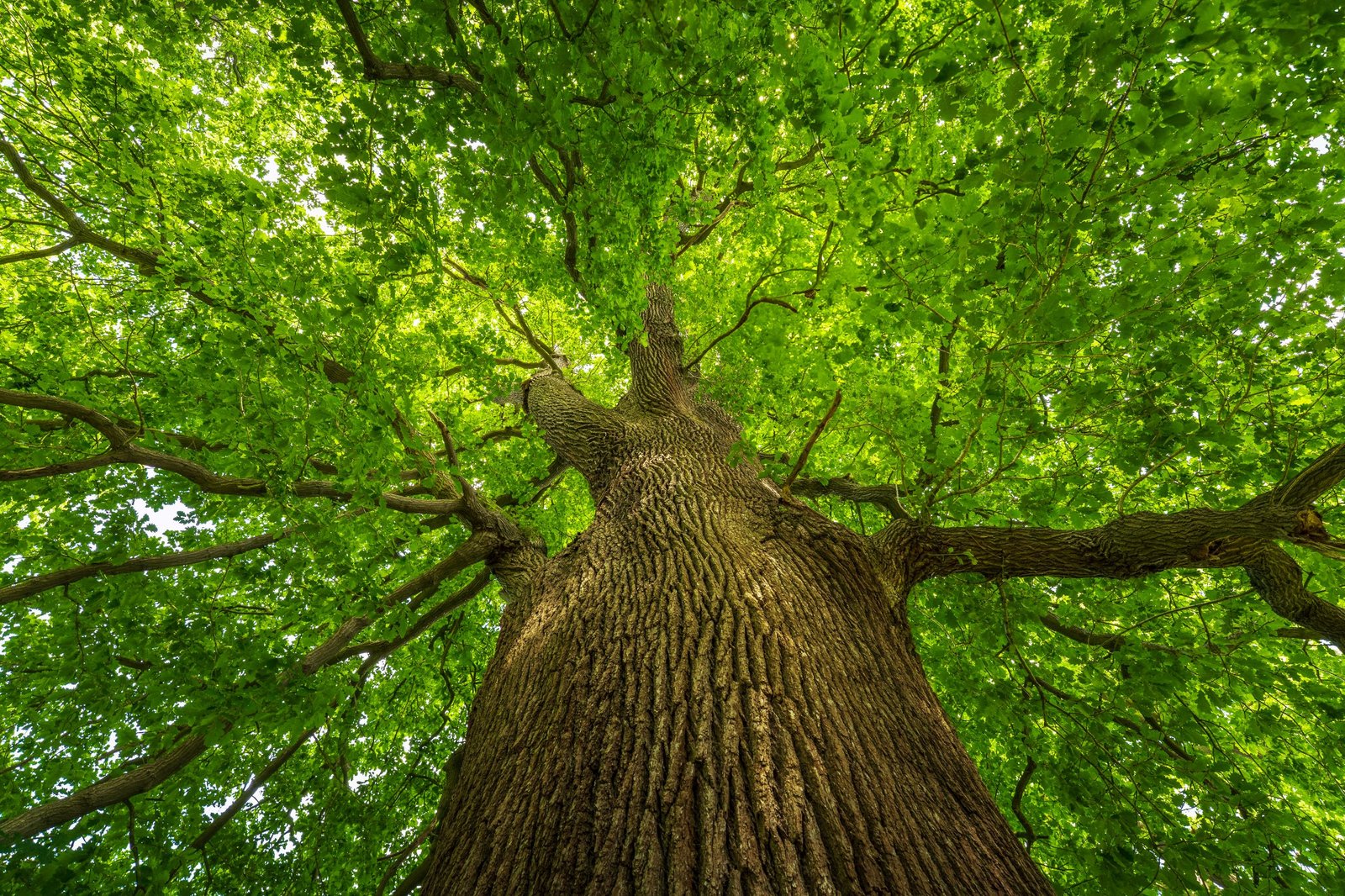Dr Jane Goodall passed away on 1 October at the age of 91. The global response to her death shows the profound impact a single person can have on the planet.
Starting out in a male-dominated field without formal scientific training, Goodall overcame early criticism of her unconventional methods, which some scientists viewed as lacking detachment and objectivity. Yet it was precisely her empathetic approach—naming chimpanzees, observing them as individuals—that helped revolutionise primatology and deepen our understanding of animal behaviour.
Goodall often reminded us that meaningful change begins with personal choices—and that even small individual actions, when multiplied, can ripple far beyond their origin. As she said, “You cannot get through a single day without having an impact on the world around you. What you do makes a difference, and you have to decide what kind of difference you want to make.”
Named a United Nations (UN) Messenger of Peace in 2002, the UN paid tribute to her legacy after her death, writing on X: “(She) worked tirelessly for our planet and all its inhabitants, leaving an extraordinary legacy for humanity and nature.”
Her sense of interconnectedness was born in the forest. There, through quiet observation and immersion in the wild, she listened—not just to the chimpanzees, but to the insects, the trees, and the earth itself. She returned with a message: that all life is sacred, and we are part of a vast and delicate web. Her work urged us to reconnect—with each other, with nature, and with the smallest creatures whose wellbeing is tied to our own.
As we say goodbye, we are invited to carry forward her message for humanity, shared in a 2022 speech at Washington University in St. Louis: “We’ve just got this one beautiful planet — it’s our one home, and it’s what we have to save. I think the problem is there’s been a disconnect between the clever brain and the human heart, which is love and compassion. I truly believe that only when the head and heart work in harmony can we attain our true human potential.”1
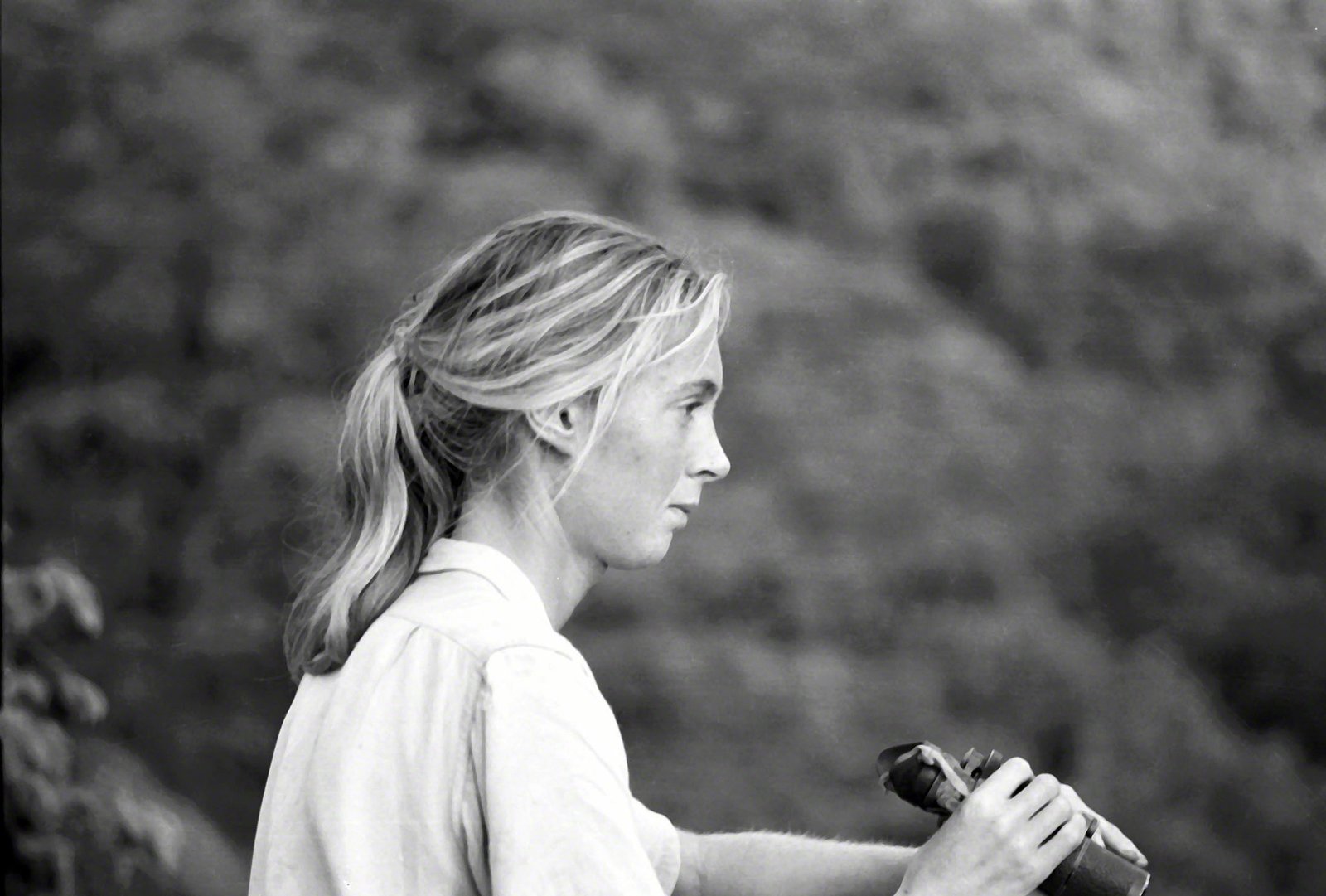
Born Valerie Jane Morris-Goodall on April 3, 1934 in London, England, she was fascinated by animals from her earliest childhood.
When she was about a year old her father gave her a stuffed toy chimp called Jubilee, a gift that seemed to predict the lifelong connection to the primates that would shape her career. Family friends thought she’d be scared of the toy, but the opposite was true—Jane adored it, and kept it her entire life.2
Early on there were signs of the qualities that would be valuable for her research work. At four-and-a-half years old, she gave her mother a scare when she disappeared for five hours on a visit to a country farm. After a frantic search, Jane was found in the henhouse, patiently watching a chicken about to lay an egg.3
Rather than scolding her, she credited her mother’s encouragement of her curiosity in moments like these for helping to lay the foundations for what would become her future career.
Besides her curious spirit, Goodall also loved reading books about animals— including Tarzan of the Apes (featuring a character named Jane, the adventurous heroine), The Jungle Book by Rudyard Kipling, and the Dr Dolittle series (about a man who is able to talk to animals). She dreamed of travelling to Africa to work with animals and write about them.4 She never imagined becoming a scientist—at the time it was just something that “girls didn’t do.”
Much of her early childhood was spent in the English seaside town of Bournemouth, in a household of women—her mother, Vanne, a novelist; her grandmother; her younger sister, Judy; and two aunts. Her father, who drove for the Aston Martin racing team and served during and after the war as an army officer, was away much of the time. Though her parents divorced in 1950, the house remained a place of intellectual stimulation, and she was nurtured by support and encouragement from her mother and other family members. It was her mother’s words that instilled a lasting sense of determination: “Work hard, take advantage of opportunity, but above all, never give up. You will find a way.” She would go on to share this message with young people around the world, inspiring them to pursue their own dreams.
That same curiosity and determination would eventually lead her to a life-changing encounter. Unable to afford college after graduating, Goodall attended secretarial school in South Kensington and worked as a waitress and for a documentary film company.
When a school friend invited her to visit their family’s farm in Kenya in 1957, she jumped at the opportunity, having saved up enough for the trip. Soon after she arrived, she met the renowned paleoanthropologist, Dr Louis Leakey, who was to become her mentor.
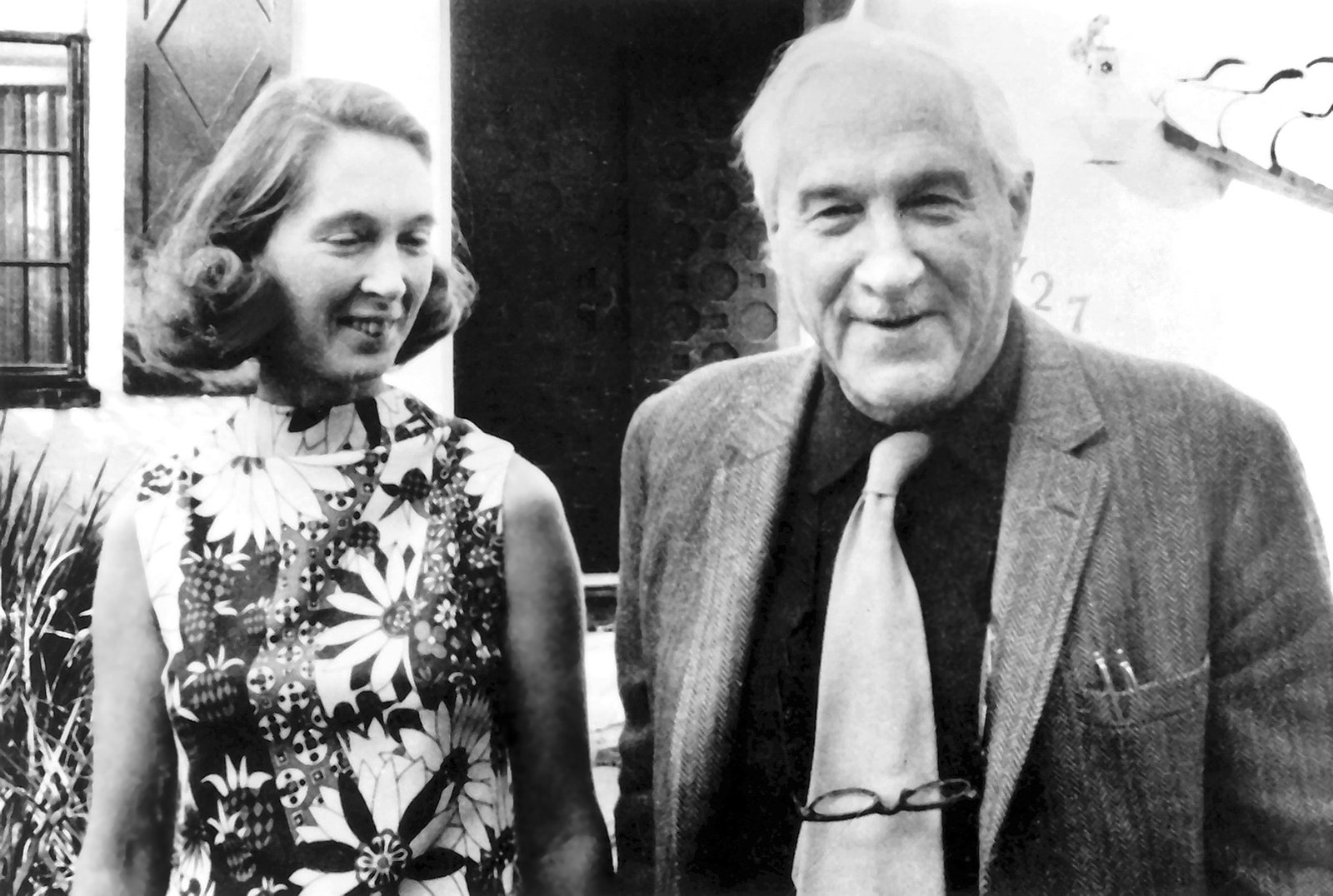
Leakey had long been searching for the right person to study chimpanzees in the wild. He believed that a study of great apes in their natural habitat could offer insight into human evolution—and that someone without formal scientific training might approach the work with fresh eyes and an open mind. Recognising Goodall’s natural curiosity and intuitive connection to animals, he hired her first as his secretary and assistant, then arranged for her to study primate behaviour in London.5
After securing funding, he commissioned Goodall to begin a chimpanzee study in what is now Gombe National Park, Tanzania, in 1960.6
Twenty-six-year-old Goodall arrived on the shores of Lake Tanganyika in July of that year. British colonial authorities prohibited her from staying in the forest alone, so her mother accompanied her for the first five months of the trip.7
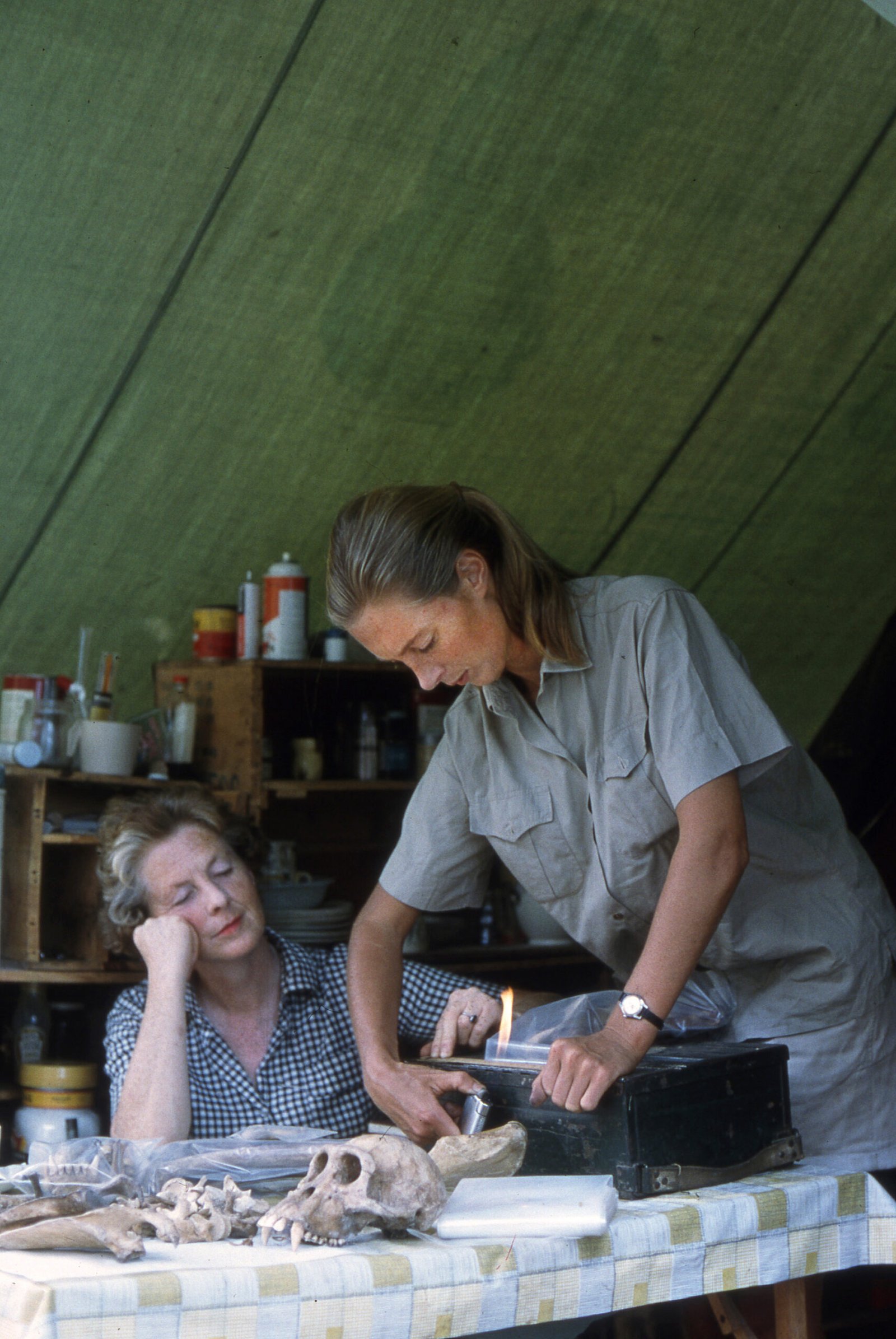
Venturing into what is now the Gombe Stream Chimpanzee Reserve—a narrow, forested strip along the eastern shore of Lake Tanganyika—Goodall began observing the Kasakela chimpanzee community in their natural habitat. At first she watched the primates from a distance using binoculars.8 She would often walk miles without seeing a chimpanzee, covering rugged terrain through thick vegetation.9
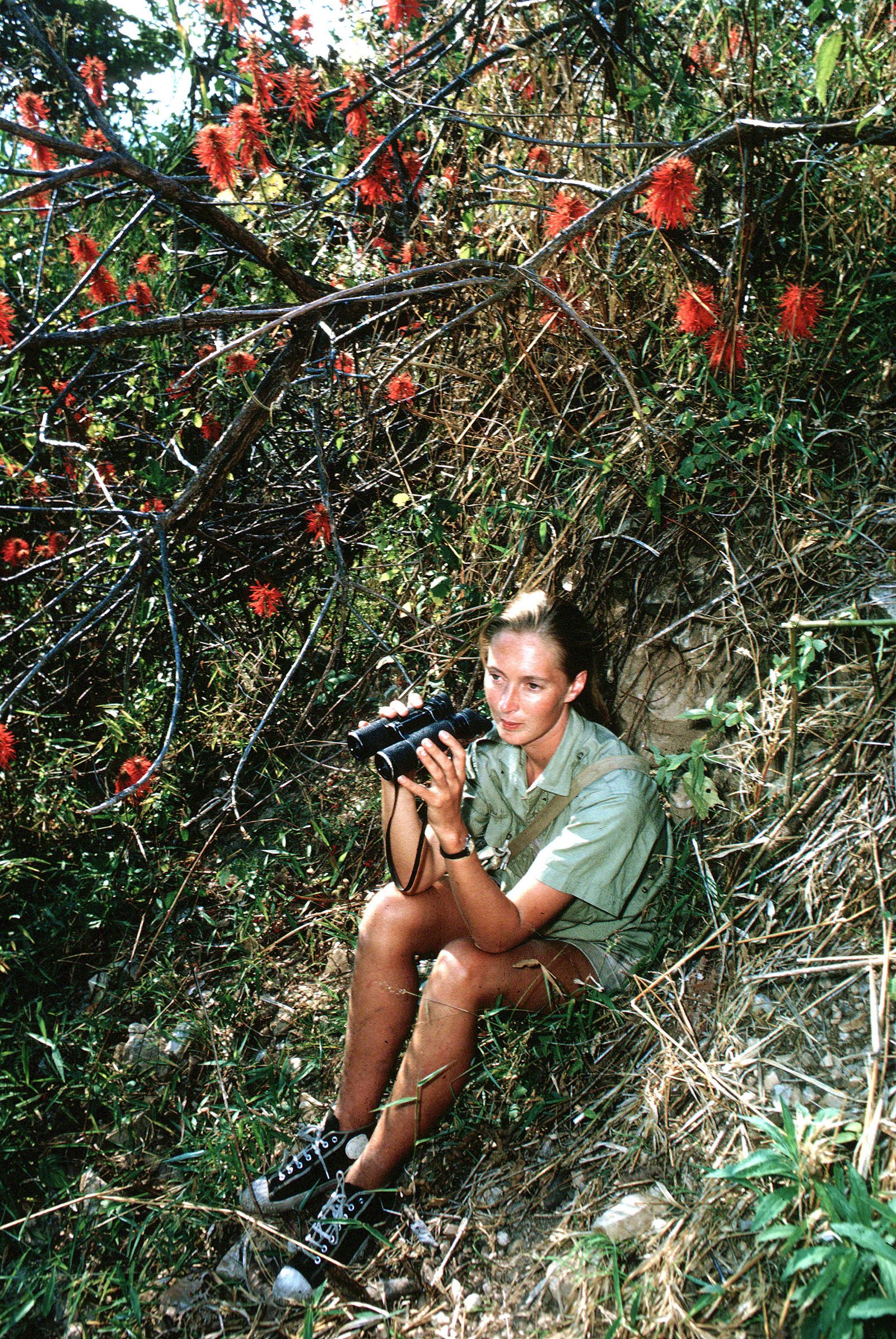
In time, an older male chimpanzee with white hairs on his chin—whom she named David Greybeard—came to trust her. At the time Goodall wasn’t aware that the scientific community used numbers rather than names to identify animals, believing this practice helped maintain objectivity and emotional detachment.
The breakthrough moment in her relationship with David Greybeard came after she followed him through the forest and offered him a palm nut. He accepted it, then dropped the nut and gently squeezed her fingers—as chimpanzees do to reassure each other. As a high-ranking male in the Kasakela community, David Greybeard’s acceptance paved the way for other chimpanzees to allow her into their world.
The behaviours Goodall observed transformed our understanding of humanity’s closest living relatives. She came to know the chimpanzees as individuals – with distinct personalities, minds and emotions – who formed long-term bonds, traits many scientists at the time believed were unique to humans.
David Greybeard, her favourite, was calm, trusting and determined. The alpha male, Goliath, was tempestuous; Frodo a bully; Flo, a nurturing and attentive mother.
She witnessed altruistic acts, such as orphaned young being adopted by unrelated members of the community.
But she also observed darker behaviours. She saw a young chimp grow depressed and die after losing his mother. Other behaviours challenged her initial perception of chimpanzees being more peaceful than humans: males using aggression to assert dominance, and when the group split into two rival factions – she observed organised, sustained violence and even murder. Her work suggested that many aspects of human behaviour reflect those seen in apes. “I felt I was learning about fellow beings capable of joy and sorrow … fear and jealousy,” she said of the time.10
She first realized that chimpanzees were making and using tools when she observed David Greybeard stripping leaves from a twig and using the slender stick to fish termites out of a mound. Until then, scientists believed tool-making was a uniquely human trait. When she reported the findings to Leakey, her mentor famously replied: “Now we must redefine ‘tool’, redefine ‘man’, or accept chimpanzees as humans.”11
Although most of their diet consists of nuts, fruit, seeds, leaves, flowers, and insects, Goodall observed chimpanzees hunting and eating meat using sophisticated cooperative strategies. Meat accounted for less than 3% of their diet, but until then, they had been considered herbivores.
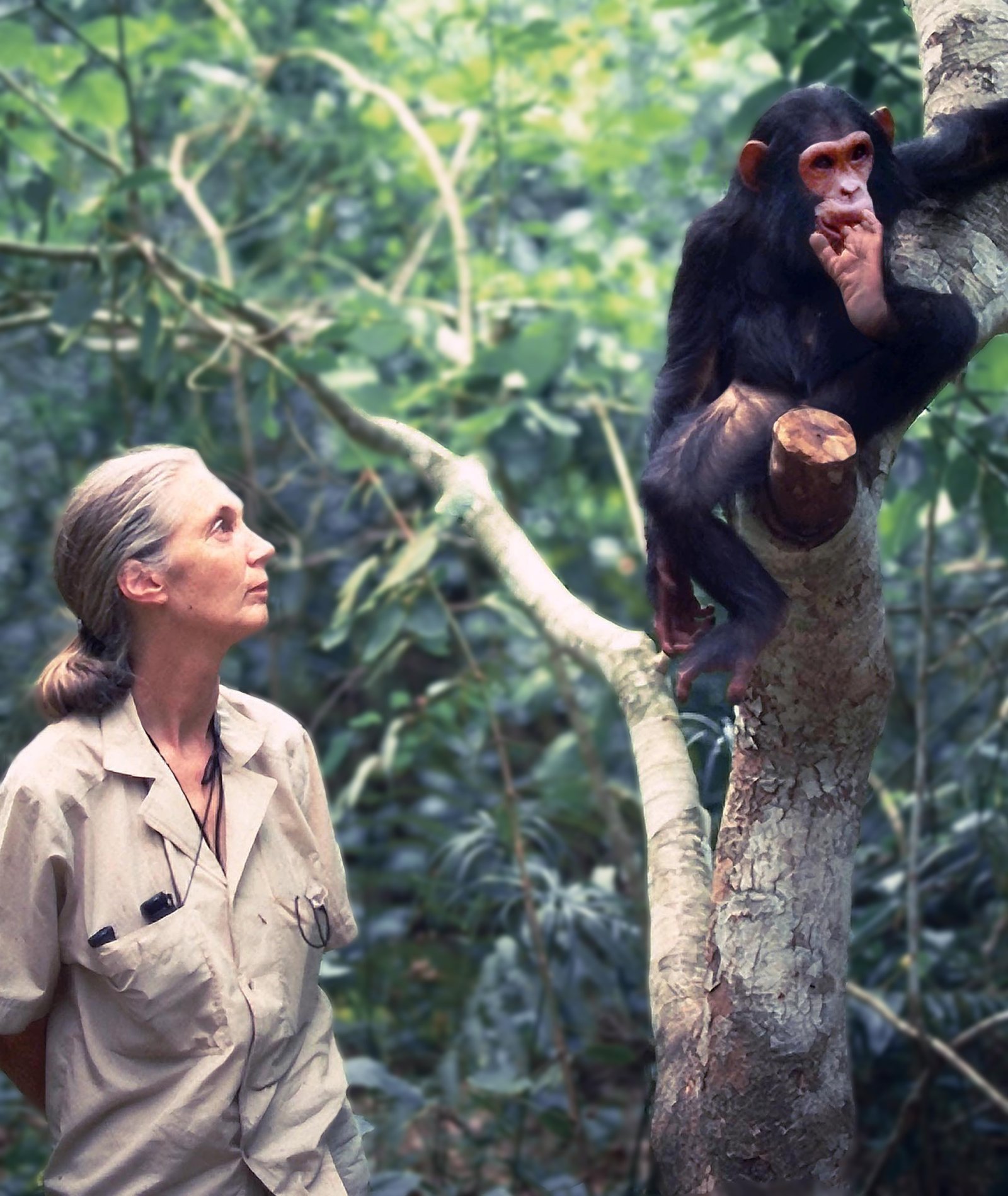
With Dr Leakey’s support, Goodall began her doctoral studies at Cambridge University in 1962, returning often to Gombe for fieldwork. She was only the eighth person to be accepted at Cambridge for a PhD without an undergraduate degree, completing her doctorate in Ethology—the study of animal behaviour—in 1966. She continued working at Gombe for the next two decades.
While her groundbreaking research was taking shape in Gombe, the forest was quietly shaping her personal journey as well. Goodall met Dutch photographer and filmmaker Hugo van Lawick in 1962 when National Geographic commissioned him to photograph her in what is now Gombe Stream National Park. They married in 1964 and their son, Hugo “Grub” Eric Louis van Lawick, was born in 1967. Van Lawick travelled extensively for his work and their professional paths diverged; the pair divorced in 1974 but remained on good terms. In 1975 she married Derek Bryceson, director of Tanzania’s national parks. Bryceson died of cancer in 1980. 12
In 1965 Goodall established the Gombe Stream Research Center. It became a training ground for students interested in primatology, ecology, and related disciplines, and notably attracted many women. In contrast, when Goodall first started her research very few women were active in the field.
She would later be recognised as part of a pioneering trio of women chosen by Leakey to study great apes in the wild. Dubbed “the Trimates,” the group included Dian Fossey, who began studying gorillas in Rwanda in 1966, and Birutė Galdikas, who started her research on orangutans in Borneo in 1971.
Her book, My Friends, the Wild Chimpanzees, published by National Geographic in 1967—the first of 32—was hugely popular.
Beyond her scientific achievements, it was the way she lived—simply and reverently—that revealed the depth of her connection to the natural world. She often walked barefoot in the forest and was unconcerned with material possessions.13 While at Gombe, she experienced the living world as infused with a profound spiritual presence. ”When you live in the forest, it’s easy to see that everything’s connected,” she said.14
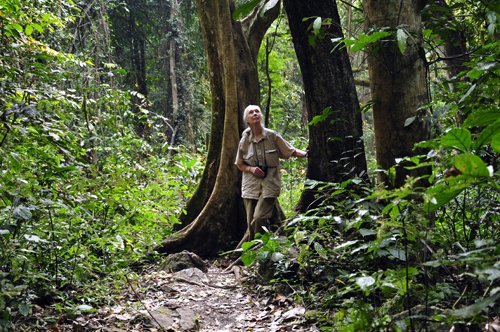
After receiving the Templeton Prize in 2021, she reflected on her time at Gombe in an interview with templetonprize.org: “When I was in Gombe, I felt very, very close to a great spiritual power. I felt this spiritual power in every living thing. We call it our soul. Well if we have a soul, then that spark of energy is in chimpanzees, they have souls. And the trees, they have a soul, too. They’ve got a spark of that divine energy.”
This sense of kinship with all living beings was reflected in her daily choices. In a 2017 essay, she recalled the moment she chose to give up meat: “I stopped eating meat some 50 years ago when I looked at the pork chop on my plate and thought: this represents fear, pain, death. That did it, and I went plant-based instantly.” Though she became vegan for ethical and environmental reasons, she also noticed physical changes. “When I stopped eating meat I immediately felt better, lighter,” she said.
From these personal convictions grew a much larger vision for conservation and community empowerment. In 1977, she founded the Jane Goodall Institute (JGI), initially to continue the work of studying and protecting chimpanzees at Gombe. The Institute recognises that protecting wildlife and habitats goes hand in hand with supporting human well-being through education and training, placing local communities at the heart of conservation. Today, it operates in 25 countries around the world.
In 1986, Goodall attended a primatology conference in Africa, and the event proved pivotal for her career. She observed that wherever chimpanzees were being studied, deforestation was also occurring. She left the conference convinced that her mission was to help the next generation become better stewards of the natural world, and to share that message globally. She also realised she would need to leave Gombe to carry out this work. “I went to the conference as a scientist. I left as an activist,” she later said.15
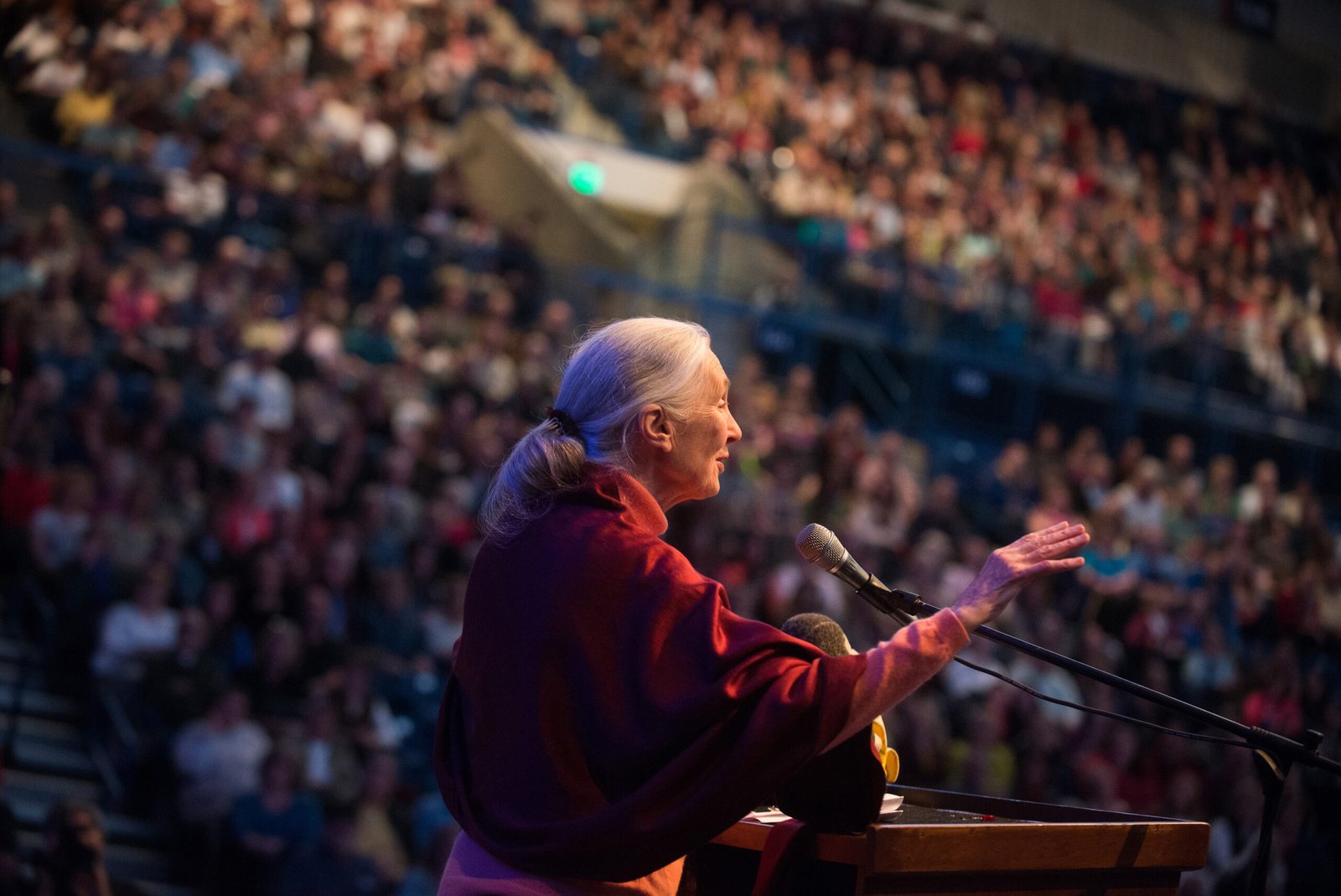
In 1991, she founded the Roots & Shoots programme. Focusing on youth, animals, and the environment, the initiative encourages young people to identify challenges in their communities and take positive action to address them. Today, it is active in more than 60 countries worldwide.
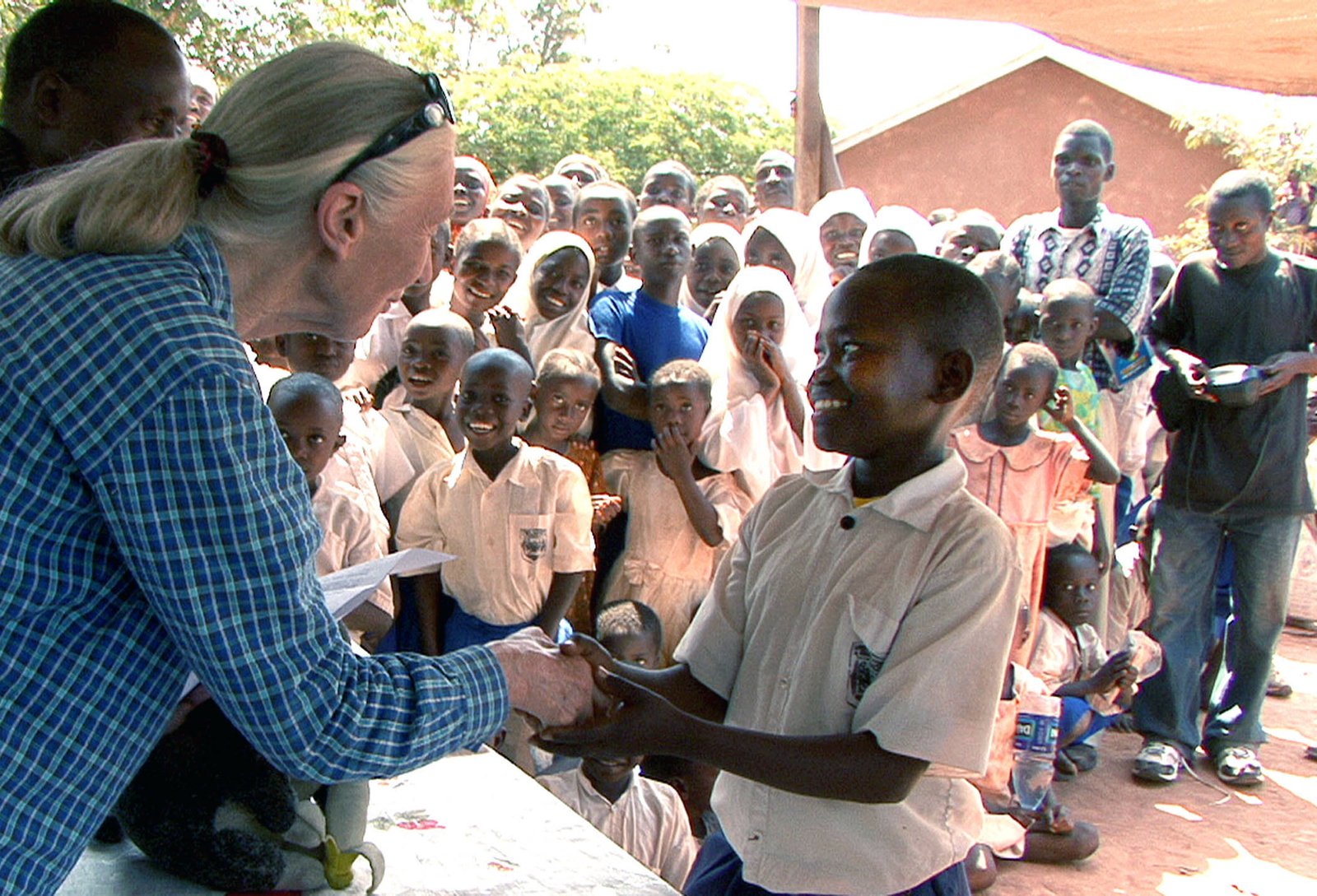
The wild chimpanzee study in Gombe National Park that Goodall began in 1960 continues to this day. Until her passing she continued spreading her message – travelling nearly 300 days a year to give speeches and advocate for wildlife and environmental conservation. She passed away in California while on a U.S. speaking tour; that day, she had been scheduled to speak at a Roots & Shoots school event in Pasadena.
Goodall was known for her grace and compassion, and was widely respected for her ability to engage with people across divides. Still, in an interview filmed in March for the Netflix series Famous Last Words, she did not shy away from expressing concern about global leadership and its impact on the planet. The new documentary series features cultural icons who share their reflections and personal convictions, recorded with the understanding that they will only be released after their death.
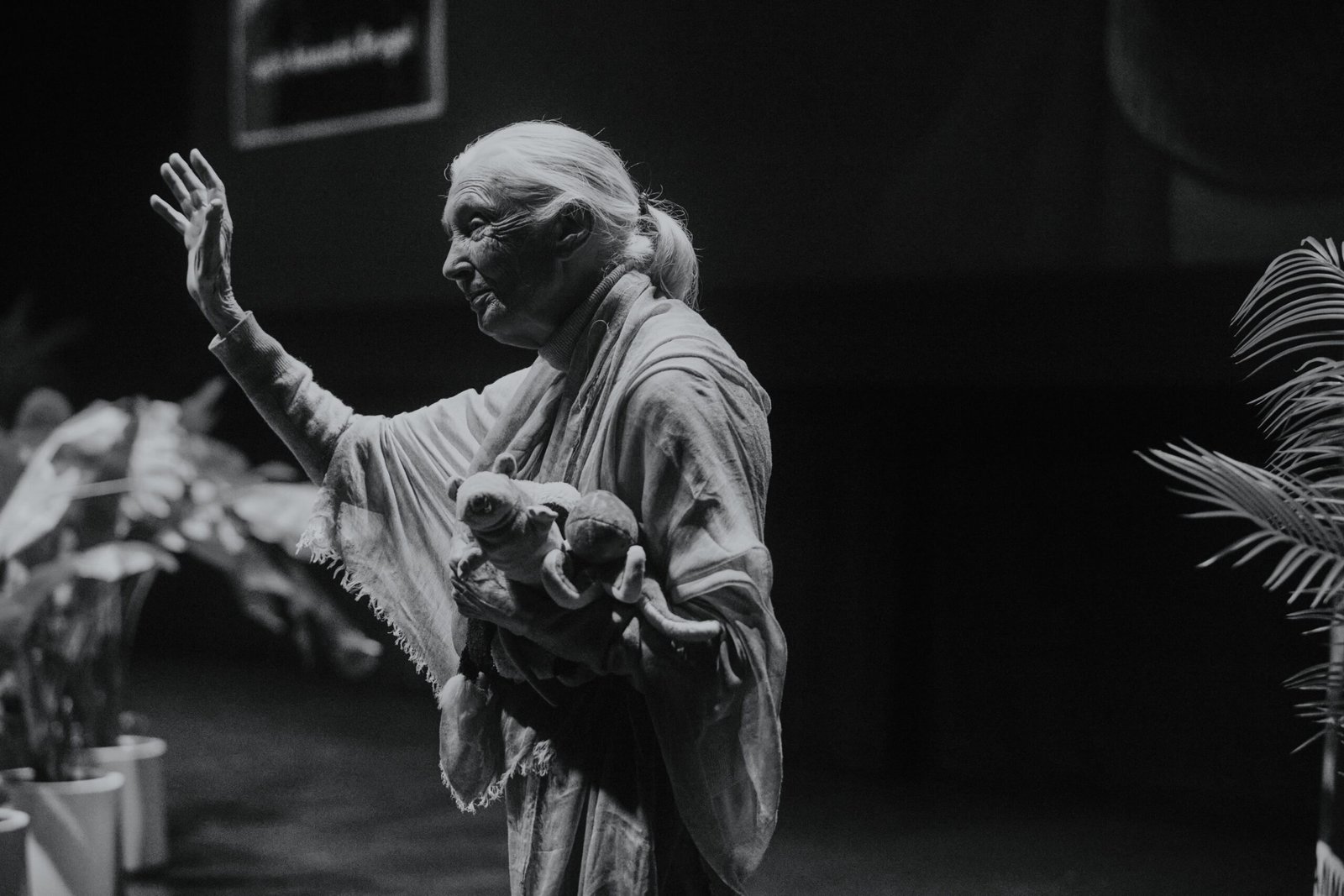
Asked by host Brad Falchuk if there were people she didn’t like, she offered a moment of unexpected frankness: “Absolutely, there are people I don’t like, and I would like to put them on one of Musk’s spaceships and send them all off to the planet he’s sure he’s going to discover.”
She went on to list several world leaders whose policies she viewed as harmful to the environment and human rights—a pointed comment that reflected her deep concern for the future of the planet and the role of leadership in shaping it.
The duo then drew comparisons to the aggressive behaviour of alpha male chimps. Having long recognised the behavioural parallels between humans and chimpanzees, Goodall was somewhat of a thought leader in the social dynamics of alpha males.16
After expressing her frustration about the direction of global leadership, Goodall affirmed her belief that most people are fundamentally decent. While acknowledging that the Earth is in “dark times,” one of her final messages in the documentary was a call to keep hope alive: ”We depend on Mother Nature for clean air, for water, for food, for clothing, for everything. And as we destroy one ecosystem after another, as we create worse climate change, worse loss of diversity, we have to do everything in our power to make the world a better place for the children alive today, and for those that will follow. You have it in your power to make a difference. Don’t give up. There is a future for you. Do your best while you’re still on this beautiful Planet Earth that I look down upon from where I am now.”
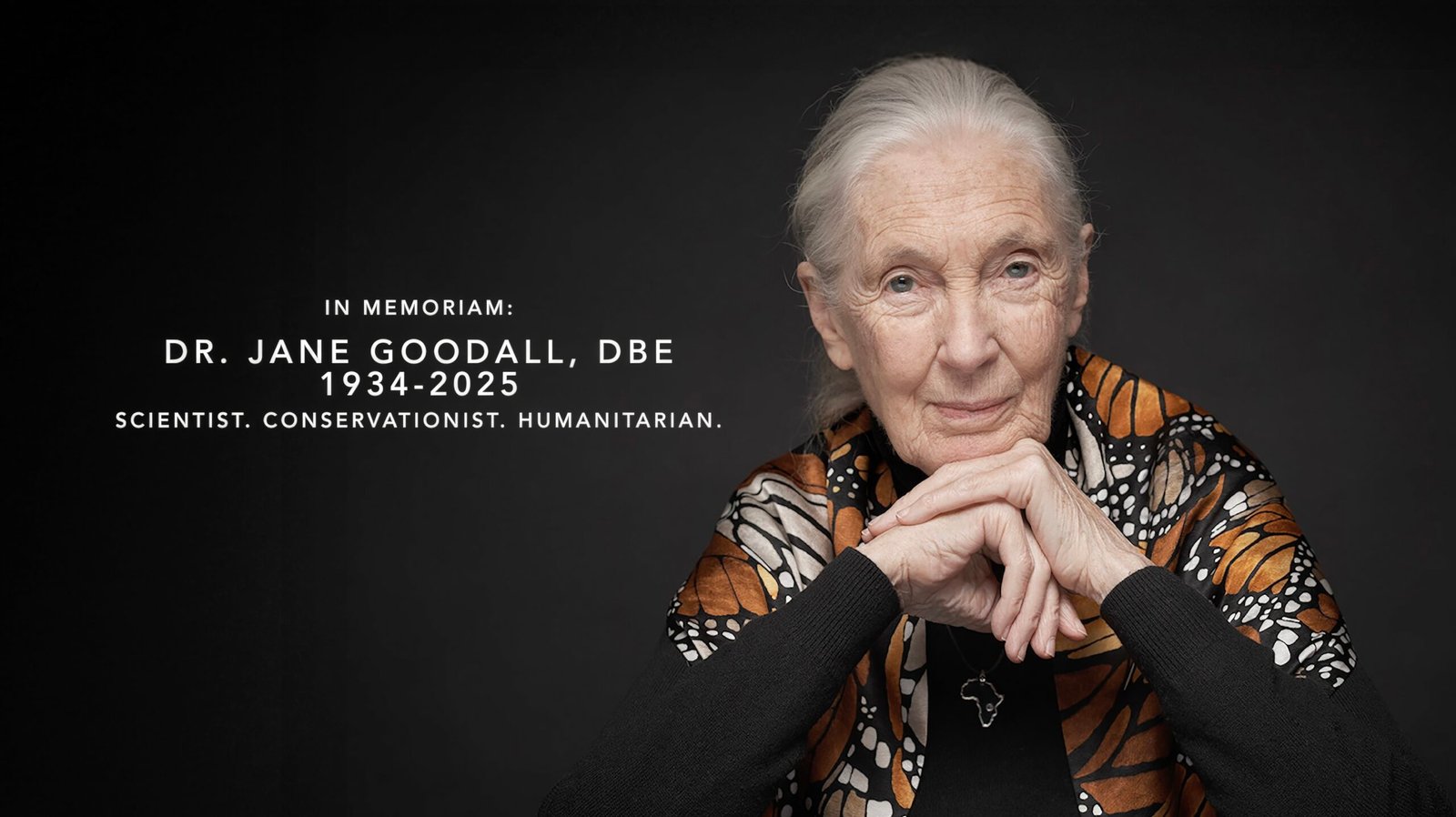
- Jane Goodall — Inspiring Hope Through Action | WashU ↩︎
- ‘Jubilee’ Plush Toy – #JGI157 | the Jane Goodall Institute Official Store ↩︎
- Dr. Jane Goodall, whose work revolutionized the study of primates, has died | CNN ↩︎
- From Dolittle to Tarzan: What iconic primatologist Jane Goodall read as a child | Books and Literature News – The Indian Express ↩︎
- Jane Goodall ↩︎
- What we learned from Jane Goodall – Geographical ↩︎
- Jane Goodall, conservationist and chimpanzee champion, dies at 91 | National Geographic ↩︎
- How Jane Goodall changed the way we see animals – and the world | New Scientist ↩︎
- Jane Goodall ↩︎
- https://www.nationalgeographic.com/animals/article/jane-goodall-death-primatologist-chimpanzee ↩︎
- Dr. Jane Goodall, whose work revolutionized the study of primates, has died | CNN ↩︎
- https://www.hindustantimes.com/world-news/us-news/who-were-jane-goodalls-husbands-inside-her-relationships-with-hugo-van-lawick-and-derek-bryceson-101759345893505.html ↩︎
- https://www.nationalgeographic.com/animals/article/jane-goodall-death-primatologist-chimpanzee ↩︎
- The Greatest Danger to Our Future is Apathy for Endangered Species – Jane Goodall’s Good for All News ↩︎
- Dr. Jane Goodall, whose work revolutionized the study of primates, has died | CNN ↩︎
- Jane Goodall’s Posthumous Netflix Special Features A Stellar Burn Of Trump | HuffPost UK Politics ↩︎
